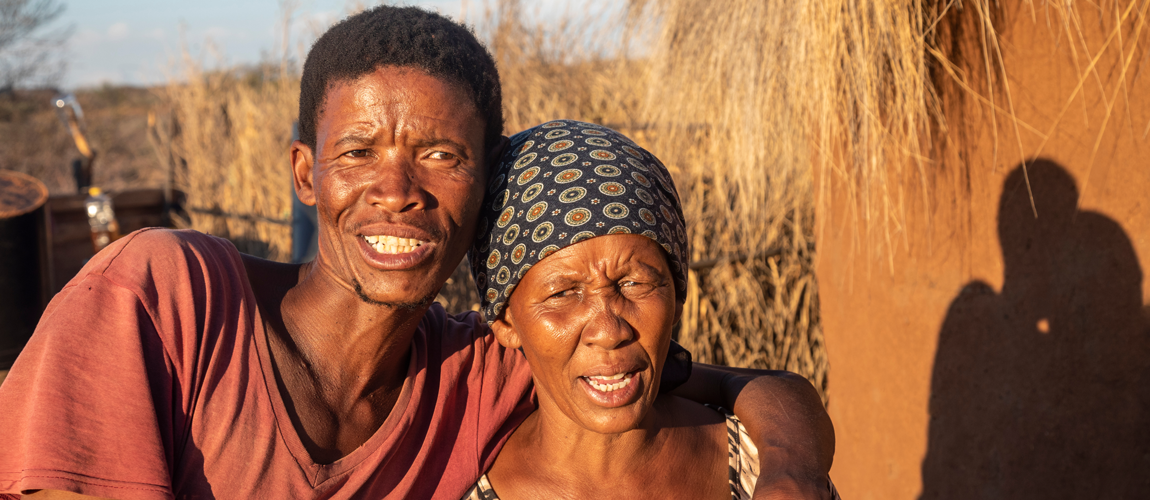 African couple in front of the house
African couple in front of the house
Intimate-partner violence (IPV) is a human rights violation and a leading public health issue. About one in every three women worldwide has experienced physical or sexual violence by their intimate partner, and rates of IPV are particularly high in Africa. Understanding the underlying drivers of IPV so that effective solutions can be identified is a top policy priority.
Existing studies have explained IPV rates by looking at spouses’ beliefs about the acceptability of violence, the mismatch in their preferences, the cost of leaving a marriage, and the woman’s bargaining power. In our new paper, we introduce a fifth, underexplored driver: the level of shared responsibility within couples. Drawing from the management, political science and conflict resolution literature—as well as existing qualitative research—we suggest that joint decision-making allows spouses to share responsibility and mitigate conflict if (for example) the decision is later regretted, and might thus be associated with less IPV.
Using Demographic and Health Surveys (DHS) data from 12 sub-Saharan African countries on decision-making over large household purchases (asked to the wife), we find that joint decision making is indeed associated with lower violence. Figure 1 shows that sole decisionmaking by the husband is associated with a 3.3 percentage point higher incidence of physical IPV in the last year compared to joint decision-making, while sole decision-making by the wife is associated with a 10-percentage point higher incidence. Similar patterns hold for emotional and sexual violence.
Figure 1

But looking at only the wife’s perception of decision-making can cloud important dynamics within the household—what might matter more for predicting IPV is whether spouses are on the same page about making decisions jointly. Fortunately, since the year 2000, the DHS asked the same question about decision-making over large household purchases to husbands in addition to wives. We use this data to build nine sets of decision-making states. These states are shown on the horizontal axis of Figure 2, which plots the regression coefficients of IPV incidence on decision-making (the regressions also control for household wealth proxies and country fixed effects).
Figure 2
Figure 2 shows that the protective role of joint decision-making within couples comes from agreement between husband and wife that decision-making is joint. If, for example, the wife says that decision-making is joint and the husband disagrees, her likelihood of facing violence is the same as when she says that the husband is the main decisionmaker. This pattern holds true for all forms of violence measured in our data—physical, emotional and sexual.
What’s more, agreement on joint decision-making is associated with lower IPV rates than agreement on decision-making by the husband. This contrasts with IPV theories that emphasize divergent preferences or contestation of power by the woman as a cause of violence (known as ‘backlash’ theories).
Next, to more systematically test whether existing IPV theories that center attitudes towards violence, similarity of preferences, marital capital or bargaining mediate the relationship shown in Figure 2, we introduce proxies for these concepts in our regressions. None of them dampen the magnitude of the relationship that we observe between joint decision-making and IPV.
So what drives this relationship? That is, why is agreeing on joint decision-making protective for women, above and beyond attitudes, preferences and bargaining power? The answer might lie in the process of making decisions jointly. Indeed, existing qualitative research from both Africa and Asia (including work by Ruth Meinzen-Dick and co-authors) shows that joint decisions are perceived as mitigating future conflict, particularly in the event of regret over an outcome. The management and political science literatures also document the importance of joint decisions for eliminating the liability of any one party and allowing for risk-sharing, thus reducing conflict.
From a policy perspective, our findings bolster the case for interventions seeking to reduce IPV by fostering shared accountability and cooperation within couples. While that’s a start, it’s important to consider that shared reports of joint decision-making may indicate an underlying level of respect and mutuality within a marriage. Interventions that encourage couples to make decisions jointly may not necessarily impact IPV if they do not help create these deeper relationships. In addition, recognizing that women who live in households in which individuals make major decisions independently or there is disagreement over who decides are at higher risk of IPV may help in the targeting of interventions.






Join the Conversation